Pakistan ( i /ˈpæk
i /ˈpækɪstæn/ or  i /pɑːkiˈstɑːn/; Urdu: پاکِستان) (Urdu pronunciation: [paːkɪˈst̪aːn] (
i /pɑːkiˈstɑːn/; Urdu: پاکِستان) (Urdu pronunciation: [paːkɪˈst̪aːn] ( listen)), officially the Islamic Republic of Pakistan (Urdu: اسلامی جمہوریہ پاکِستان) is a country in South Asia. It has a 1,046-kilometre (650 mi) coastline along the Arabian Sea and the Gulf of Oman in the south and is bordered by Afghanistan and Iran in the west, India in the east and China in the far northeast.[7] Tajikistan also lies very close to Pakistan but is separated by the narrow Wakhan Corridor. Strategically it is located in a position between the important regions of South Asia, Central Asia and the Middle East.[8]
listen)), officially the Islamic Republic of Pakistan (Urdu: اسلامی جمہوریہ پاکِستان) is a country in South Asia. It has a 1,046-kilometre (650 mi) coastline along the Arabian Sea and the Gulf of Oman in the south and is bordered by Afghanistan and Iran in the west, India in the east and China in the far northeast.[7] Tajikistan also lies very close to Pakistan but is separated by the narrow Wakhan Corridor. Strategically it is located in a position between the important regions of South Asia, Central Asia and the Middle East.[8]
The region forming modern Pakistan was the site of several ancient cultures including theneolithic Mehrgarh and the bronze era Indus Valley Civilisation. Subsequently it was the recipient of Vedic, Persian, Indo-Greek, Islamic, Turco-Mongol, and Sikh cultures through several invasions and/or settlements. As a result the area has remained a part of numerous empires and dynasties including the Persian empires, Islamic caliphates and the Mauryan,Mongol, Mughal, Sikh and British Empires. Pakistan gained independence from the British Empire in 1947 after a struggle for independence, led by Mohammad Ali Jinnah, that sought independent states for the Muslim majority populations of the eastern and western regions ofBritish India.[9] With the adoption of its constitution in 1956, Pakistan became an Islamic republic.[10] In 1971, an armed conflict in East Pakistan resulted in the creation ofBangladesh.[11]
Pakistan is a federal parliamentary republic consisting of four provinces and four federal territories. With over 170 million people, it is the sixth most populous country in the world[2] and has the second largest Muslim population after Indonesia.[12] It is an ethnically andlinguistically diverse country with a similar variation in its geography and wildlife. With a semi-industrialized economy, it is the 27th largest in the world in terms of purchasing power. Since gaining independence, Pakistan's history has been characterised by periods of military rule,political instability and conflicts with neighbouring India. The country faces challenging problems including poverty, illiteracy, corruption and terrorism.
Pakistan has the seventh largest standing armed force and is the only Muslim-majority nation to possess nuclear weapons. It is designated as a major non-NATO ally of the United States.[13] It is a founding member of the Organization of the Islamic Conference[14] and a member of the United Nations,[15] Commonwealth of Nations,[16] Next Eleven economies and the G20 developing nations.
Etymology
The name Pakistan means Land of (the) Pure in Urdu and Persian. It was coined in 1934 asPakstan by Choudhary Rahmat Ali, a Pakistan movement activist, who published it in his pamphlet Now or Never.[17] The name is a portmanteau representing the "thirty million Muslim brethren who live in PAKSTAN—by which we mean the five Northern units of India viz: Punjab,North-West Frontier Province (Afghan Province), Kashmir, Sind, and BaluchisTAN".[18] The letter 'i' was later added to ease pronunciation.
History
Main articles: History of Pakistan and History of South Asia
The Indus region, which covers a considerable amount of Pakistan, was the site of several ancient cultures including the Neolithic era's Mehrgarh and the bronze era Indus Valley Civilisation (2500–1500 BCE) at Harappa and Mohenjo-Daro.[19]
Waves of conquerors and migrants from the west—including Harappan, Indo-Aryans, Persians, Greeks, Sakas, Parthians,Kushans, Hephthalites, Afghans, Arabs, Turks andMughals—settled in the region throughout the centuries, influencing the locals and being absorbed among them.[20]Ancient empires of the east—such as the Nandas, Mauryas,Sungas, Guptas and the Palas—ruled these territories at different times from Patliputra.[21]
However, in the medieval period, while the eastern provinces of Punjab and Sindh grew aligned with Indo-Islamic civilisation, the western areas became culturally allied with the Iranian civilisation of Afghanistan and Iran.[22] The region served as a crossroads of historic trade routes, including the Silk Road, and as a maritime entreport for the coastal trade between Mesopotamia and beyond up to Rome in the west and Malabar and beyond up to China in the east.[23]
Modern day Pakistan was at the heart of the Indus Valley Civilisation; that collapsed in the middle of the 2nd millennium BCE and was followed by the Vedic Civilisation, which also extended over much of the Indo-Gangetic plains. Successive ancient empires and kingdoms ruled the region: the Achaemenid Persian empire around 543 BCE,[24] the Greek empire founded by Alexander the Great in 326 BCE and theMauryan empire founded by Chandragupta Maurya and extended by Ashoka the Great, until 185 BCE.[25]
The Indo-Greek Kingdom founded by Demetrius of Bactria included Gandhara and Punjab from 184 BCE, and reached its greatest extent under Menander, establishing the Greco-Buddhist period with advances in trade and culture. The city of Taxila (Takshashila) became a major centre of learning in ancient times—the remains of the city, located to the west of Islamabad, are one of the country's major archaeological sites.[26] The Rai Dynasty (c.489–632) of Sindh, at its zenith, ruled this region and the surrounding territories.[27]
In 712 CE, the Arab general Muhammad bin Qasim conquered Sindh and Multan in southern Punjab.[28]The Pakistan government's official chronology states that "its foundation was laid" as a result of this conquest.[29] This Arab and Islamic victory would set the stage for several successive Muslim empires in South Asia, including the Ghaznavid Empire, the Ghorid Kingdom, the Delhi Sultanate and the Mughal Empire. During this period, Sufi missionaries played a pivotal role in converting a majority of the regional Buddhist and Hindu population to Islam.
The gradual decline of the Mughal Empire in the early eighteenth century provided opportunities for theAfghans, Balochis and Sikhs to exercise control over large areas until the British East India Companygained ascendancy over South Asia.[30] The Indian Rebellion of 1857, also known as the Sepoy Mutiny, was the region's last major armed struggle against the British Raj, and it laid the foundations for the generally unarmed freedom struggle led by the Indian National Congress in the twentieth century. In the 1920s and 1930s, a movement led by the Hindu politician Mahatma Gandhi, and displaying commitment to long enshrined Hindu tenet of ahimsa, or non-violence, engaged millions of protesters in mass campaigns of civil disobedience.[31]
The All India Muslim League rose to popularity in the late 1930s amid fears of under-representation and neglect of Muslims in politics. On 29 December 1930, Allama Iqbal's presidential address called for an autonomous "state in northwestern India for Indian Muslims, within the body politic of India."[32] Quaid e Azam Muhammad Ali Jinnah espoused the Two Nation Theory and led the Muslim League to adopt the Lahore Resolution of 1940, popularly known as the Pakistan Resolution. In early 1947, Britain announced the decision to end its rule in India. In June 1947, the nationalist leaders of British India—including Nehru and Abul Kalam Azad on behalf of the Congress, Jinnah representing the Muslim League, and Master Tara Singh representing theSikhs—agreed to the proposed terms of transfer of power and independence.
The modern state of Pakistan was established on 14 August 1947 (27 Ramadan 1366 in theIslamic Calendar), carved out of the two Muslim-majority wings in the eastern and northwestern regions of British India and comprising the provinces of Balochistan, East Bengal, the North-West Frontier Province, West Punjab andSindh.[33] The controversial, and ill-timed, division of the provinces of Punjab and Bengal caused communal riots across India and Pakistan—millions of Muslims moved to Pakistan and millions of Hindus and Sikhs moved to India.[34]
Disputes arose over several princely states including in the Muslim-majority Jammu and Kashmir, whose Hindu ruler had acceded to India following an invasion by Pashtun tribal militias, leading to the First Kashmir War in 1948.[35]
From 1947 to 1956, Pakistan was a Dominion of Pakistan in the Commonwealth of Nations. It became a Republic in 1956, but the civilian rule was stalled by a coup d’état by General Ayub Khan, who was president during 1958–69, a period of internal instability and a second war with India in 1965. His successor, Yahya Khan (1969–71) had to deal with a devastating cyclone—which caused 500,000 deaths in East Pakistan—and also face a civil war in 1971. Economic grievances and political dissent in East Pakistan led to violent political tension and military repression that escalated into a civil war.[36] After nine months of guerrilla warfare between thePakistan Army and the Indian backed Bengali Mukti Bahini militia, Indian intervention escalated into the Indo-Pakistani War of 1971, and ultimately to the secession of East Pakistan as the independent state of Bangladesh.[37]
Civilian rule resumed in Pakistan from 1972 to 1977 under Zulfikar Ali Bhutto, until he was deposed and later sentenced to death in 1979 by General Zia-ul-Haq, who became the country's third military president. Zia introduced the Islamic Sharia legal code, which increased religious influences on the civil service and the military. With the death of President Zia in a plane crash in 1988, Benazir Bhutto, daughter of Zulfikar Ali Bhutto, was elected as the first female Prime Minister of Pakistan. Over the next decade, she fought for power withNawaz Sharif as the country's political and economic situation worsened. Pakistan got involved in the 1991 Gulf War and sent 5,000 troops as part of a U.S.-led coalition, specifically for the defence of Saudi Arabia.[38]
Military tensions in the Kargil conflict with India were followed by a Pakistani military coup d'état in 1999 in which General Pervez Musharraf assumed vast executive powers.[39][40] In 2001, Musharraf became Presidentafter the controversial resignation of Rafiq Tarar. After the 2002 parliamentary elections, Musharraf transferred executive powers to the newly elected Prime Minister Zafarullah Khan Jamali, who was succeeded in the 2004 prime-ministerial election by Shaukat Aziz. On 15 November 2007, the National Assembly, for the first time in Pakistan's history, completed its tenure and new elections were called. The exiled political leaders Benazir Bhutto and Nawaz Sharif were permitted to return to Pakistan. However, the assassination of Benazir Bhuttoduring the election campaign in December led to postponement of elections and nationwide riots. Bhutto'sPakistan Peoples Party (PPP) won the largest number of seats in the elections held in February 2008 and its member Yousaf Raza Gillani was sworn in as Prime Minister.[41] On 18 August 2008, Pervez Musharraf resigned from the presidency when threatened with impeachment,[42] and was succeeded by current president Asif Ali Zardari. By the end of 2009, more than 3 million Pakistani civilians have been displaced by the on going conflict in North-West Pakistan between the government and Taliban militants.[43]
Government and politics
Pakistan is a democratic parliamentary federal republic with Islam as the state religion.[44] The firstConstitution of Pakistan was adopted in 1956, but was suspended in 1958 by General Ayub Khan. The Constitution of 1973 - suspended in 1977, by Zia-ul-Haq, but re-instated in 1985 - is the country's most important document, laying the foundations of the current government.[20]
The bicameral legislature comprises a 100-member Senate and a 342-member National Assembly. The President is the Head of state and the Commander-in-chief of the Armed Forces and is elected by an electoral college. The prime minister is usually the leader of the largest party in the National Assembly. Each province has a similar system of government with a directly elected Provincial Assembly in which the leader of the largest party or alliance becomes Chief Minister. Provincial Governors are appointed by the President.[44]
The Pakistani military has played an influential role in mainstream politics throughout Pakistan's history, with military presidents ruling from 1958–71, 1977–88 and from 1999–2008.[45] The leftistPakistan Peoples Party, led by Zulfikar Ali Bhutto, won support after the loss of East Pakistan but was overthrown amidst riots in 1977.[46] Under the military rule of Muhammad Zia-ul-Haq, A politically nationalist insurgency in Balochistan was also bloodlessly quelled by military governorRahimuddin.[47] The 1990s were characterised by coalition politics dominated by the Pakistan Peoples Party and a rejuvenated Muslim League.[44] Pakistan is an active member of the United Nations (UN) and the Organisation of the Islamic Conference (OIC), the latter of which Pakistan has used as a forum for Enlightened Moderation, a plan to promote a renaissance andenlightenment in the Muslim world.[44] Pakistan is also a member of the South Asian Association for Regional Cooperation (SAARC) and the Economic Cooperation Organisation (ECO).[44] In the past, Pakistan has had mixed relations with the United States; in the early 1950s, Pakistan was the United States' "most allied ally in Asia"[48] and a member of both the Central Treaty Organisation (CENTO) and the Southeast Asia Treaty Organisation (SEATO).
| Flag | Flag of Pakistan |
| Emblem | Faith, Unity, Discipline |
| Anthem | Qaumi Tarana |
| Animal | Markhor |
| Bird | Chukar |
| Flower | Jasmine |
| Tree | Cedrus deodara |
| Juice | Sugarcane juice |
| Sport | Field hockey |
| Dress | Shalwar Kameez |
During the Soviet-Afghan War in the 1980s, Pakistan was a major U.S. ally.[50] But relations soured in the 1990s, when sanctions were imposed by the U.S. over Pakistan's refusal to abandon its nuclear activities.[51] However, the American War on Terrorism, as an aftermath of 11 September 2001 attacks in New York, led to an improvement in US–Pakistan ties, especially after Pakistan ended its support of the Taliban regime in Kabul. Its positive side was evidenced by a major increase in American military aid, providing Pakistan $4 billion more in three years after the 9/11 attacks than before.[52] On the other hand, Pakistan is presently burdened with nearly 3 million displaced civilians due to the ongoing Afghan war. As of 2004, in contexts of the War on Terror, Pakistan was being referred to as part of the Greater Middle East by the US under the Bush administration.[53]
On 18 February 2008, Pakistan held its general elections after Benazir Bhutto's assassinationpostponed the original date of 8 January 2008.[54] The Pakistan Peoples Party won the majority of the votes and formed an alliance with the Pakistan Muslim League (N). They nominated and electedYousaf Raza Gilani as Prime Minister.[55] On 18 August 2008, Pervez Musharraf resigned as President of Pakistan amidst increasing calls for his impeachment.[56] In the presidential election that followed, Asif Ali Zardari of Pakistan People's Party won a landslide majority and became President of Pakistan.[57]
Administrative units
Main articles: Administrative units of Pakistan and Districts of Pakistan
Pakistan is a federation of four provinces, a capital territory and a group of federally administered tribal areas. The government of Pakistan exercisesde facto jurisdiction over the western parts of the disputed Kashmir region, organized as two separate political entities; Azad Kashmir and Gilgit-Baltistan.
Prior to 2001, the sub-provincial tier of government was composed of 26divisions with two further tiers (districts and tehsils) administered directly from the provincial level. The divisions were abolished in 2001[58] and a new three-tiered system of local government came into effect comprising districts, tehsils and union councils with an elected body at each tier.
There are currently 113 districts in Pakistan-proper, each with several tehsils and union councils. The tribal areas comprise seven tribal agencies and six small frontier regions[59] detached from neighboring districts whilst Azad Kashmir comprises ten[60] and Gilgit-Baltistan seven[61] districts respectively.
| Provinces | Territories |
|---|---|
| Balochistan | Islamabad Capital Territory |
| Khyber Pakhtunkhwa | Federally Administered Tribal Areas including theFrontier Regions |
| Punjab | Azad Jammu and Kashmir |
| Sindh | Gilgit-Baltistan |
Military
Main article: Pakistani Armed Forces
Further information: War in North-West Pakistan
The armed forces of Pakistan are the seventh-largest in the world. The three main services are theArmy, Navy and the Air Force, supported by a number of paramilitary forces which carry out internal security roles and border patrols. The National Command Authority is responsible for exercising employment and development control of all strategic nuclear forces and organisations, and for Pakistan's nuclear doctrine.
The Pakistan Army came into existence after independence in 1947 and is currently headed by General Ashfaq Parvez Kayani. The Pakistan Army is a professional fighting force.[62] It has an active force of 612,000 personnel and 513,000 men in reserve.[63] Conscription may be introduced in times of emergency, but it has never been imposed.[64]
Since independence, the Army has been involved in four wars with neighbouring India and several border skirmishes with Afghanistan. It maintained division and brigade strength presences in some of the Arab countries during the past Arab–Israeli Wars, and aided the Coalition in the first Gulf War. Other major operations undertaken by the Army include Operation Black Thunderstorm andOperation Rah-e-Nijat. Apart from conflicts, the Army has been an active participant in United Nations peacekeeping missions and played a major role in rescuing trapped American soldiers from Mogadishu, Somalia in 1993 in Operation Gothic Serpent.
The Pakistan military first saw combat in the First Kashmir War, gaining control of what is nowPakistan-administered Kashmir. In 1961, the army repelled a major Afghan incursion on Pakistan's western border.[65] Pakistan and India were at war again in 1965 and in 1971. In 1973, the military quelled a Baloch nationalist uprising.
In the past, Pakistani personnel have volunteered to serve alongside Arab forces in conflicts with Israel. During the Six-Day War in 1967 and Yom Kippur War in October 1973 PAF pilots volunteered to go to the Middle East to support Egypt and Syria in a state of war against Israel, Air Force pilots shot down ten Israeli planes in the Six-Day War. During the Yom Kippur War 16 PAF pilots volunteered to leave for the Middle East in order to support Egypt and Syria but by the time they arrived Egypt had already agreed on a cease-fire.[66]
During the Soviet–Afghan war, Pakistan shot down several intruding pro-Soviet Afghan aircraft and provided covert support to the Afghan mujahideen through the Inter-Services Intelligence agency. In 1999, Pakistan was involved in the Kargil conflict with India. Currently, the military is engaged in an armed conflict with extremist Islamic militants in the north-west of the country.[67]
Since 2004, Pakistani armed forces are engaged in fighting against Pakistani Taliban groups. Militant groups have engaged in suicide bombings in Pakistani cities, killing more than 3,000 civilians and armed personnel in 2009 alone.[68]
Internationally the Pakistani armed forces contributed to United Nations peacekeeping efforts, with more than 10,700 personnel deployed in 2009,[69] and are presently the largest contributor. Pakistan provided a military contingent to the UN-backed coalition in the first Gulf War.[70] The Pakistani troops were rushed to Makkah on Saudi Government's request and Pakistani SSGcommandos lead the operation of the Grand Mosque Seizure.
Geography and climate
Main articles: Geography of Pakistan and Climate of Pakistan
Pakistan covers an area of 796,095 km2 (307,374 sq mi), approximately equaling the combined land areas of France and the United Kingdom. It is the 36th largest nation by total area although this ranking varies depending on how the disputed territory of Kashmir is counted. Apart from the 1,046 km (650 mi) coastline along the Arabian Sea, Pakistan's land borders a total of 6,774 km (4,209 mi)—2,430 km (1,510 mi) with Afghanistan, 523 km (325 mi) with China, 2,912 km (1,809 mi) with India and 909 km (565 mi) with Iran.[20] The territory it controls mostly lies between latitudes 23° and 37° N (a small area is north of 37°), and longitudes 61° and 78° E (a small area is west of 61°).
Geologically, Pakistan overlaps with the Indian tectonic plate in its Sindh and Punjab provinces, while Balochistan and most of Khyber Pakhtunkhwa lie within the Eurasian plate which mainly comprises the Iranian plateau. Gilgit-Baltistan and Azad Kashmir lie mainly in Central Asia along the edge of the Indian plate and are hence prone to violent earthquakes.
The geography of Pakistan is a blend of landscapes varying from plains to deserts, forests, hills, and plateaus ranging from the coastal areas of the Arabian Sea in the south to the mountains of the Karakoram range in the north. Pakistan is divided into three major geographic areas: the northern highlands; the Indus River plain; and the Balochistan Plateau.[71] The northern highlands of Pakistan contain the Karakoram, Hindu Kushand Pamir mountain ranges, which incorporate some of the world's highest peaks, including K2(8,611 m/28,251 ft) and Nanga Parbat (8,126 m/26,660 ft). The Balochistan Plateau lies to the West, and the Thar Desert in the East. An expanse of alluvial plains lies in Punjab and Sindh along the Indus river. The 1,609 km (1,000 mi) Indus River and its tributaries flow through the country from the Kashmir region to the Arabian Sea.[72]
Pakistan's climate varies from tropical to temperate with arid conditions existing in the coastal south, characterized by a monsoon season with adequate rainfall and a dry season with lesser rainfall. There are four distinct seasons; a cool, dry winter from December through February; a hot, dry spring from March through May; the summer rainy season or southwest monsoon period, from June through September; and the retreating monsoon period of October and November.[73] Rainfall can vary radically from year to year, and successive patterns of flooding and drought are common.[74]
Flora and fauna
Main articles: Flora of Pakistan and Fauna of Pakistan
The diversity of landscapes and climates in Pakistan allows for a wide variety of trees and plants to flourish in this region. The forests range from coniferous alpine and subalpine trees such as spruce, pine, anddeodar cedar in the extreme northern mountains, to deciduous trees such as the mulberry-type Shisham in the Sulaiman range in the majority of the country, to palms such coconut and date in South Punjab and all of Sindh. The western hills are home to juniper and tamarisk as well as coarse grasses and scrub plants.Mangrove forests form much of the coastal wetlands along the coast in the south.[75]
Coniferous forests in most of the northern and north-western highlands are found at altitudes ranging from 1,000m to 4,000m. In the xeric regions of Balochistan, date palms and ephedra are common floral varieties. In most of Punjab and Sindh, the Indus plains support tropical and subtropical dry and moist broadleaf forestry as well as tropical and xeric shrublands. These forests are mostly mulberry, acacia, andEucalyptus.
According to statistics, 2.5% or about 1,902,000 hectares (19,020 km2) of Pakistan was forested in 2000.[76]
Similar to the vegetation, the animal life in Pakistan reflects the varied climatic regions of the land. The southern plains are home to crocodiles in the Indus while boars, deers, porcupines, and small rodents are found more commonly in the surrounding areas. The sandy scrublands of central Pakistan are home to a jackals, hyenas, wild cats,panthers, and leopards.
In the north, a wide variety of animals have found home in the mountainous regions including the Marco Polo sheep, Urial sheep, Markhor and Ibex goats, black and brown Himalayan bears, and the rare Snow Leopard. Another rare species is the blind Indus River Dolphin of which there are believed to be about 1,100 remaining, protected at the Indus River Dolphin Reserve in Sindh.[77] There have been sightings of the rareAsiatic cheetahs in the southwestern deserts of Sindh and Balochistan.
Apart from crows, sparrows and myna, hawks, falcons, and eagles are the more commonly found birds in Pakistan. A lot of birds sighted within Pakistan are migratory as they make their way from Europe, Central Asia and India.[78]
In recent years, the number of wild animals being killed for fur and leather trading led to a new law banning the hunting of wild animals and birds as well as the establishment of several wildlife sanctuaries and game reserves. The number of hunters have greatly dwindled since then.[79]
Vast sections of the Indus flood plains have been cleared of natural vegetation to grow crops. Only animals like the jackal, mongoose, jungle cat, civet cat, scaly anteater, desert cat and the wild hare occur in these areas. Hog deer are found in riveine tracts. The crop residues and wild growth support reasonable populations of black and grey partridges.[80]
The lack of vegetative cover, severity of climatic conditions, and the impact of grazing animals on the deserts have left wild animals in a precarious position. Chinkara is the only animal that can still be found in significant numbers in Cholistan.[81] The blackbuck, once plentiful in Cholistan, has now been eliminated; efforts are being made to reintroduce them into the country. A small number of blue bulls are found along the Pakistan-Indian border, and in some parts of Cholistan. Grey partridge, species of sand grouseand the Indian courser are the main birds of the area. Peafowl occur in some areas in Cholistan.[82]
Economy
Main article: Economy of Pakistan
Pakistan has a semi-industrialized economy.[83][84] The growth poles of the Pakistani economy are situated along the Indus River.[84][85] Diversified economies of Karachi and Punjab's urban centres, coexist with lesser developed areas in other parts of the country.[84] Despite being a very poor country in 1947, Pakistan's economic growth rate has been better than the global average during the subsequent four decades, but imprudent policies led to a slowdown in the late 1990s.[86]
Recently, wide-ranging economic reforms have resulted in a stronger economic outlook and accelerated growth especially in the manufacturing and financial services sectors.[86] Since the 1990s, there has been great improvement in the foreign exchange position and rapid growth in hard currency reserves.[86]
The 2005 estimate of foreign debt was close to US$40 billion. However, this has decreased in recent years with assistance from the International Monetary Fund and significant debt-relief from the United States. Pakistan's gross domestic product, as measured by purchasing power parity, is estimated to be $475.4 billion[87] while its per capita income stands at $2,942.[87] The poverty rate in Pakistan is estimated to be between 23%[88] and 28%.[89]
GDP growth was steady during the mid-2000s at a rate of 7%;[90][91] however, slowed down during the Economic crisis of 2008 to 4.7%.[20] A large inflation rate of 24.4% and a low savings rate, and other economic factors, continue to make it difficult to sustain a high growth rate.[92][93] Pakistan's GDP is US$167 billions, which makes it the 48th-largest economy in the world or 27th largest by purchasing power adjusted exchange rates. Today, Pakistan is regarded as to having the second largest economy in South Asia.[94]
The structure of the Pakistani economy has changed from a mainly agricultural base to a strong service base. Agriculture now only accounts for roughly 20% of the GDP, while the service sector accounts for 53% of the GDP.[95] Significant foreign investments have been made in several areas including telecommunications, real estate and energy.[96][97] Other important industries include apparel and textiles (accounting for nearly 60% of exports), food processing, chemicals manufacture, and the iron and steel industries.[98] Pakistan's exports in 2008 amounted to $20.62 billion (USD).[20] Pakistan is a rapidly developing country.[99][100][101]
However, the economic crisis of 2008 led Pakistan to seek more than $100 billion in aid in order to avoid possible bankruptcy.[102][103] This was never given to Pakistan and it had to depend on a more aggressive fiscal policy, backed by the IMF. A year later, Asian Development Bank reported that the Pakistan economic crisis was easing.[104] Furthermore it is projected that in 2010 Pakistan economy would grow at least 4% and could grow more with strong international economic recovery.[105]
Demographics
Main article: Demographics of Pakistan
The estimated population of Pakistan in 2010 was over 170 million[2] making it the world's sixth most-populous country, behind Brazil and ahead of Russia. In 1951 Pakistan had a population of 34 million.[106] The population growth rate now stands at 1.6%.[107] The majority of southern Pakistan's population live along the Indus River. By population size, Karachi is the largest city of Pakistan.[108] In the northern half, most of the population live in an arc formed by the cities of Lahore, Faisalabad, Rawalpindi, Islamabad, Gujranwala, Sialkot,Gujrat, Jhelum, Sargodha, Sheikhupura, Nowshera, Mardan and Peshawar. About 20% of the population live below the international poverty line of US$1.25 a day .[109]
Life expectancy at birth is 63 years for females and 62 years for males as of 2006[110]compared to the healthy life expectancy at birth which was 54 years for males and 52 years for females in 2003.[110] Expenditure on health was at 2% of the GDP in 2006.[110] The mortality below 5 was at 97 per 1,000 live births in 2006.[110] During 1990–2003, Pakistan sustained its historical lead as the most urbanised nation in South Asia, with city dwellers making up 36% of its population.[111] Furthermore, 50% of Pakistanis now reside in towns of 5,000 people or more.[112]
Pakistan is a multilingual country with more than sixty languages being spoken. English is the official language of Pakistan and used in official business, government, and legal contracts,[20] and Punjabi has a plurality of native speakers, Urdu is the lingua franca and national language in Pakistan. Punjabi is the provincial language of Punjab. Saraiki is also spoken in the larger area of Punjab province. Pashto is the provincial language of Khyber Pakhtunkhwa. Sindhi is the provincial language of Sindh and Balochi is the provincial language of Balochistan.[113]
Pakistan is the second-most populous Muslim-majority country[12][114] and also has the second-largest Shi'a population in the world.[115]About 97% of the Pakistanis are Muslim. The majority are Sunni, with an estimated 5-20% Shi'a.[116][117][118][119][120] 2.3% areAhmadis,[121] who are officially considered non-Muslims since a 1974 "anti-Ahmadi" constitutional amendment.[122] There are also severalSufi and Quraniyoon communities.[123][124][125][126] Although the groups of Muslims usually coexist peacefully, sectarian violence occurs sporadically.[127] The religious breakdown of the country is as follows:[116][117][118][119][120]
- Islam 173,000,000 (97%) (the majority are Sunni Muslims, 5-20% are Shi'a and 2.3% are Ahmadis).
- Hinduism 2,800,000 (1.6%)[116]
- Christianity 2,800,000 (1.6%)[116]
- Sikhs Around 20,000 (0.001%)
- The remaining are Parsis, Buddhists, Jews, Bahá'ís, and Animists (mainly the Kalasha of Chitral).[128]
The population comprises several main ethnic groups (2009)[129]:
- Punjabis (44.15%) 78.7 million
- Pashtuns (15.42%) 27.2 million
- Sindhis (14.1%) 24.8 million
- Seraikis (10.53%) 14.8 million
- Muhajirs (7.57%) 13.3 million
- Balochs is (3.57%) 6.3 million
- Others (4.66%) 11.1 million
Smaller ethnic groups, such as Kashmiris, Hindkowans, Kalash, Burusho, Brahui, Khowar, Shina, and Turwalis are mainly found in the northern parts of the country.
Pakistan's census does not include the registered 1.7 million Afghan refugees from neighbouring Afghanistan, who are mainly found in theKhyber Pakhtunkhwa and Federally Administered Tribal Areas (FATA) areas, with small numbers in the cities of Karachi and Quetta.[130]Around 2 million refugees from Bangladesh, Iran, Africa, and other places are also found in Pakistan.
| Rank | City | Location | Population | Rank | City | Location | Population | |
|---|---|---|---|---|---|---|---|---|
| 1 | Karachi | Sindh | 13,205,339 | 11 | Sargodha | Punjab | 600,501 | |
| 2 | Lahore | Punjab | 7,129,609 | 12 | Bahawalpur | Punjab | 543,929 | |
| 3 | Faisalabad | Punjab | 2,880,675 | 13 | Sialkot | Punjab | 510,863 | |
| 4 | Rawalpindi | Punjab | 1,991,656 | 14 | Sukkur | Sindh | 493,438 | |
| 5 | Multan | Punjab | 1,606,481 | 15 | Larkana | Sindh | 456,544 | |
| 6 | Hyderabad | Sindh | 1,578,367 | 16 | Sheikhupura | Punjab | 426,980 | |
| 7 | Gujranwala | Punjab | 1,569,090 | 17 | Jhang | Punjab | 372,645 | |
| 8 | Peshawar | KP | 1,439,205 | 18 | Rahim Yar Khan | Punjab | 353,112 | |
| 9 | Quetta | Balochistan | 896,090 | 19 | Mardan | KP | 352,135 | |
| 10 | Islamabad | Capital Territory | 689,249 | 20 | Gujrat | Punjab | 336,727 |
Education
Main article: Education in Pakistan
According to the constitution of Pakistan, it is the state’s responsibility to provide free primary education.[132] At the time of independence Pakistan had only one university, the University of the Punjab, founded in 1882 in Lahore. Pakistan now has more than 130 Universities of which 71 are public universities and 59 are private universities.[133]
Education in Pakistan is divided into five levels: primary (grades one through five); middle (grades six through eight); high (grades nine and ten, leading to the Secondary School Certificate);intermediate (grades eleven and twelve, leading to a Higher Secondary School Certificate); and university programmes leading to graduate and advanced degrees.[134]
Pakistan also has a parallel secondary school education system in private schools, which is based upon the curriculum set and administered by the Cambridge International Examinations, in place of government exams. Some students choose to take the O level and A level[135] exams through the British Council.
There are currently 730 technical & vocational institutions in Pakistan.[136] The minimum qualifications to enter male vocational institutions, is the completion of grade 8, and for female is grade 5.
English medium education is to be extended, on a phased basis, to all schools across the country.[137] Through various educational reforms, by the year 2015, the ministry of education expects to attain 100% enrolment levels amongst primary school aged children, and a literacy rate of 86% amongst people aged over 10.[138]
Pakistan also has madrassahs that provide free Islamic education and also offer free boarding and lodging to students who come mainly from the poorer strata of society.[139] After criticism over terrorists using them for recruiting purposes, efforts have been made to regulate them.[140]
In 2004 only 46.6 percent of adult Pakistanis were literate. Male literacy was 60.6 percent, while female literacy was 31.5 percent. Literacy rates also vary regionally, and particularly by sex, for instance in tribal areas female literacy is 3%.[141] The government launched a nationwide initiative in 1998 with the aim of eradicating illiteracy and providing a basic education to all children.[142]
Culture
Main article: Culture of Pakistan
Pakistani society is largely hierarchical, with high regard for traditional Islamic values, although urban families have grown into a nuclear family system because of the socio-economic constraints imposed by the traditional joint family system.[143] Recent decades have seen the emergence of a middle class in cities like Karachi, Lahore, Islamabad, Rawalpindi, Hyderabad, Faisalabad, Multanand Peshawar (now numbering at 30 million, with an average annual income of US$10,000, with another 17 million belonging to the upper and upper-middle classes[144] that wish to move in a more centrist direction, as opposed to the northwestern regions bordering Afghanistan that remain highly conservative and dominated by centuries-old regional tribal customs. Increasing globalisation has resulted in ranking 46th on the A.T. Kearney/FP Globalization Index.[145]
The variety of Pakistani music ranges from diverse provincial folk music and traditional styles such as Qawwali and Ghazal Gayaki to modern forms fusing traditional and western music, such as the synchronisation of Qawwali and western music by the world renowned Nusrat Fateh Ali Khan. In addition Pakistan is home to many famous folk singers such as the late Alam Lohar, who is also well known in Indian Punjab. However, majority of Pakistanis listen to Indian music produced byBollywood and other Indian film industries. The arrival of Afghan refugees in the western provinces has rekindled Pashto and Persian music and established Peshawar as a hub for Afghan musicians and a distribution center for Afghan music abroad.[146]
State-owned Pakistan Television Corporation (PTV) and Pakistan Broadcasting Corporation were the dominant media outlets, but there are now numerous private television channels. Various American, European, and Asian television channels and films are available to the majority of the Pakistani population via private television networks, cable, and satellite television (43 million Pakistanis have satellite television).[147] There are also small indigenous film industries based in Lahore and Peshawar (often referred to asLollywood). And while Bollywood films have been banned from being played in public cinemas since 1965 they have remained popular in popular culture.[148]
The architecture of the areas now constituting Pakistan can be designated to four distinct periods—pre-Islamic, Islamic, colonial and post-colonial. With the beginning of the Indus civilisation around the middle of the 3rd millennium B.C.,[149] an advanced urban culture developed for the first time in the region, with large structural facilities, some of which survive to this day.[150] Mohenjo Daro, Harappa and Kot Diji belong to the pre-Islamic era settlements. The rise of Buddhism and the Persian and Greek influence led to the development of the Greco-Buddhiststyle, starting from the 1st century CE. The high point of this era was reached with the culmination of the Gandhara style.
An example of Buddhist architecture is the ruins of the Buddhist monastery Takht-i-Bahi in the northwest province.[151]
The arrival of Islam in today's Pakistan meant a sudden end of Buddhist architecture.[152] However, a smooth transition to predominantly pictureless Islamic architecture occurred. The most important of the few completely discovered buildings of Persian style is the tomb of the Shah Rukn-i-Alam in Multan. During theMughal era design elements of Islamic-Persian architecture were fused with and often produced playful forms of the Hindustani art. Lahore, occasional residence of Mughal rulers, exhibits a multiplicity of important buildings from the empire, among them the Badshahi mosque, the fortress of Lahore with the famous Alamgiri Gate, the colourful, still strongly Persian seeming Wazir Khan Mosque as well as numerous other mosques and mausoleums. Also the Shahjahan Mosque of Thatta in Sindh originates from the epoch of the Mughals.[153] In the British colonial period, predominantly functional buildings of the Indo-European representative style developed from a mixture of European and Indian-Islamic components. Post-colonial national identity is expressed in modern structures like the Faisal Mosque, the Minar-e-Pakistanand the Mazar-e-Quaid.[154]
The literature of Pakistan covers the literatures of languages spread throughout the country, namely Urdu,Sindhi, Punjabi, Pushto, Baluchi as well as English[155] and Persian as well. Prior to the 19th century, the literature mainly consisted of lyric poetry and religious, mystical and popular materials. During the colonial age the native literary figures, under the influence of the western literature of realism, took up increasingly different topics and telling forms. Today, short stories enjoy a special popularity.[156]
The national poet of Pakistan, Allama Muhammad Iqbal, suggested the creation of a separate homeland for the Muslims of India. However, Iqbal had also wrote the Tarana-e-Hind which stated the belief of a strong united India. His book The Reconstruction of Religious Thought in Islam is a major work of modern Islamic philosophy. The most well-known representative of the contemporary Urdu literature of Pakistan isFaiz Ahmed Faiz. Sufi poets Shah Abdul Latif, Bulleh Shah, Mian Muhammad Bakhsh and Khawaja Farid are also very popular in Pakistan.[157] Mirza Kalich Beg has been termed the father of modern Sindhi prose.[158]
Tourism
Main article: Tourism in Pakistan
Despite being once listed as one of the most dangerous countries in the world by The Economist,[159] tourism is still a growing industry in Pakistan because of its diverse cultures, peoples and landscapes.[160] The variety of attractions ranges from the ruins of ancient civilisations such as Mohenjo-daro, Harappa and Taxila, to the Himalayan hill-stations, that attract those interested in field and winter sports. Pakistan also has five out of fourteen mountain peaks of height over 8,000 metres (26,250 ft), that attract adventurers and mountaineers from around the world, especially toK2.[161] From April to September, domestic and international visitors to these areas bring tourist income to the local people.
In Balochistan there are many caves for cavers and tourists to visit especially the Juniper Shaft Cave, the Murghagull Gharra cave, Mughall saa cave, and Pakistan's naturally decorated cave, the Mangocher Cave. Pakistan is a member country of the Union International de Spéléologie (UIS).[162]
The northern parts of Pakistan are home to several historical fortresses, towers and other architecture including the Hunza and Chitral valleys, the latter being home to the Kalash, a small pre-Islamic Animist community.[163] Punjab is also the site of Alexander's battle on the Jhelum River. The historic city of Lahore is considered Pakistan's cultural centre and has many examples of Mughal architecture such as the Badshahi Masjid, Shalimar Gardens, Tomb of Jahangir and theLahore Fort.[164] The Pakistan Tourism Development Corporation (PTDC) also helps promote tourism in the country.[165] However, tourism is still limited because of the lack of proper infrastructure and the worsening security situation in the country. The recent militancy in Pakistan's scenic sites, including Swat in Khybar Pakhtoon Kawa province, have dealt a massive blow to the tourism industry. Many of the troubles in these tourist destinations are also blamed on the frail travel network, tourism regulatory framework, low prioritisation of the tourism industry by the government, low effectiveness of marketing and a constricted tourism perception.[166][167] After these areas were being cleared off the militant groups in late 2009, the government, with financial support from the USAID, started a campaign to reintroduce tourism in Swat valley. Pakistan receives 500,000 tourists annually, with almost half of them heading to northern Pakistan.[168]
Sports
Main article: Sports in Pakistan
The national sport of Pakistan is field hockey, although cricket is the most popular game across the country.[169] The national cricket team has won the Cricket World Cup once (in 1992), were runners-up once (in 1999), and co-hosted the games twice (in 1987 and 1996). Pakistan were runners-up in the inaugural 2007 ICC World Twenty20 held in South Africa and were the champions at the 2009 ICC World Twenty20 held in England. Lately however, Pakistani cricket has suffered heavily due to teams refusing to tour Pakistan because of terrorism fears. No teams have toured Pakistan since March 2009, when militants attacked the touring Sri Lankan cricket players.[170]
Squash is another sport that Pakistanis have excelled in. Successful world-class squash players such as Jahangir Khan and Jansher Khan have won the World Open several times during their careers.
At international level, Pakistan has competed many times at the Olympics in field hockey, boxing, athletics, swimming, and shooting. Pakistan's Olympic medal tally stands at 10 (3 gold, 3 silver and 4 bronze) while the Commonwealth Games and Asian Games medal tally stands at 61 and 182 respectively. Hockey is the sport in which Pakistan has been most successful at the Olympics, with three gold medals in (1960, 1968, and 1984). Pakistan has also won the Hockey World Cup a record four times (1971, 1978, 1982, 1994).
Among others, Association football and Polo are the more prominent sports with regular national events held in different parts of the country.Boxing, Billiards, Snooker, Rowing, Kayaking, Caving, Tennis, Contract Bridge, Golf and Volley Ball are also actively participated and Pakistan has produced notable champions in these sports at regional and international levels.
Transport
Main article: Transport in Pakistan
Rail services in Pakistan are provided by the state-run Pakistan Railways, under the supervision of the Ministry of Railways. Pakistan Railways provides an important mode of transportation in Pakistan, catering to the large-scale movement of people and freight. The railway network comprises 8,163 km[171] of which 1,676 mm (5 ft 6 in) (broad gauge) forms 7,718 km including 293 km of electrified track. Pakistan Railways carry 65 million passengers annually and daily operates 228 mail, express and passenger trains. Pakistan Railways also operate special trains for various occasions. The Freight Business Unit with 12000 personnel operates over 200 freight stations on the railway network. Pakistan has also planned or had many Mass Transit Systems. The Karachi Circular Railway, which opened in the early 1940s, is the only functioning Mass Transit System in Pakistan as of date. In 1976, Karachi was slated to begin work on an underground metro system, but plans have been put on hold since. The Lahore Metro is another proposal still in planning and is scheduled to be completed by 2020. Pakistan has been successful in foreign trade by rail. Pakistan has successfully traded with countries such as Turkey, Iran, Afghanistan, India, Turkmenistanand China.[172]
During the 1990s, Pakistan began an ongoing project to rebuild all national highways throughout the country specifically to important financial, cargo and textile centres. The National Highway Authority or NHA is responsible for the maintenance of all national highways in Pakistan. The construction of motorways began in the early 1990s with the idea building a world class road network and to reduce the load off the heavily used national highways throughout the country. The first motorway to be completed was M1 in 1997 from Peshawar to Islamabad. Later on, highways such as M2 from Islamabad to Lahore, M3 from Pindi Bhattian to Faisalabad, M9 from Hyderabad to Karachi, Karachi Northern Bypass from Hyderabad to Karachi, and the Lahore Ring Road[173] were completed.
The waterway network in Pakistan is in its infancy with Karachi being the only major city situated next to the Arabian Sea. Plans are being proposed for the development of the waterways in the country along the Indus River and through the Punjab as it would boost employment opportunities and the economic and social development in Pakistan.[174] Pakistan has an estimated 139 airports, 10 of them international.[175]


 11:51 PM
11:51 PM
 Wikipedia
Wikipedia

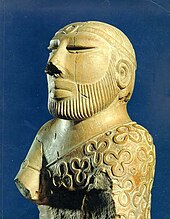



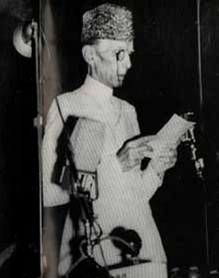
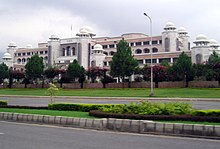

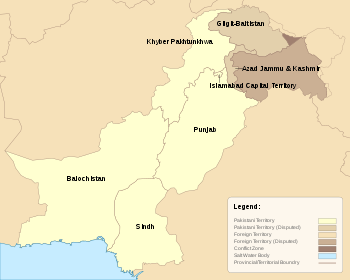
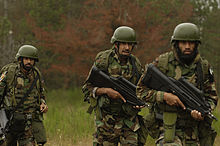





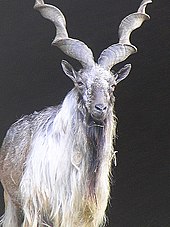

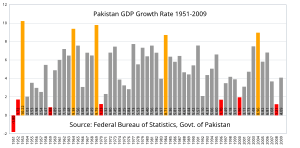



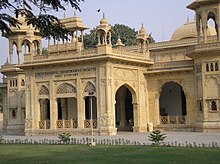

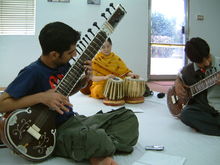
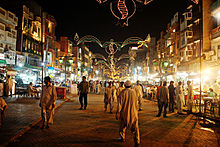


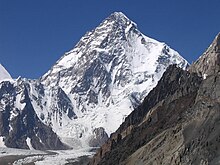

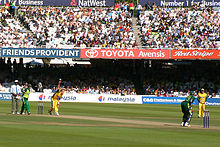

 Posted in:
Posted in: 

0 comments:
Post a Comment